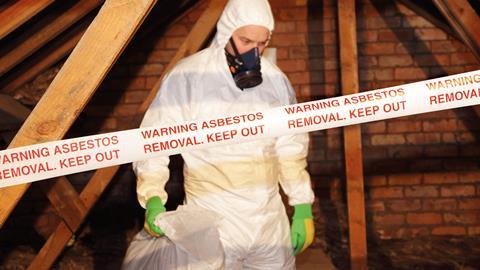Asbestos-related cancer is now hitting white-collar workers, 10 years after the first wave of claims began to subside
When Manchester’s Crown Square court was closed last week for urgent asbestos checks, it was no surprise to industrial disease lawyers who are seeing an increase in a new kind of mesothelioma claim.
While some experts were predicting an end to these claims 10 years ago, as the generation of manual workers who handled asbestos decades ago died out, indirect claims from those who have never touched the fibrous mineral or believed they were exposed are now emerging. These present a new challenge for lawyers, who not only have to fight for compensation but also have to help clients understand the implications of having such a serious and unexpected condition.
This is not an epidemic of cases. Figures released last month by the Health and Safety Executive show that there were 2,544 mesothelioma deaths in Great Britain in 2020. This was a rise of 6% compared with 2019 but still broadly similar to the average over the last eight years. But analysts suggest that this rise could have been even higher in reality, given that the increased mortality rate from Covid-19 caused delays in the certification system.

Lawyers agree that they have seen a noticeable increase in potential clients, particularly those from white-collar jobs and professions who worked in schools and hospitals. The HSE statistics show that 459 women, who were more likely than men to work in those places, died in 2020 – a rise of 7%, which is above the eight-year average.
Tony Hood, national head of asbestos strategy at national firm Thompsons Solicitors, said: ‘We’ve definitely noticed a change in the way those diagnosed with mesothelioma were exposed to asbestos. While we continue see many cases of workers from traditional heavy industrial areas, such as shipbuilding, there are an increasing number of clients instructing us who have been exposed in non-traditional ways.’
Hood said claimants have included those who did not work with asbestos but were exposed as a result of washing the overalls of family members. The rise in clients who worked in non-industrial environments includes younger people: last year the firm settled a claim for the family of a 45-year-old IT worker who was exposed during maintenance works at his office.
‘Asbestos cannot be just seen as a disease that affects older men who worked in manual labour roles anymore,’ said Hood.
The emergence of indirect claims presents fresh difficulties for lawyers handling these kinds of cases. Rather than tracking down the owners of long-defunct factories and shipyards, the challenge is working out how and why clients were exposed.
'Often these claims are much more complex as the client may not know where exactly exposure took place'
Madelene Holdsworth, Slater and Gordon
Jennifer Seavor and Rachel James, partners in the specialist team at national firm RWK Goodman, said claimants often have no idea where they or their loved one came into contact with asbestos.
‘We’ve used witnesses to track a teacher’s normal route around a building and pinpoint where work took place and whether that teacher would every have crossed paths with it,’ they said. ‘It’s very much like putting a jigsaw puzzle together with very small pieces of evidence.

‘Mesothelioma is a disease which touches people from all walks of life, of all ages, and exposure isn’t always from employment. Exposure from the fabric of buildings is much more common,’ they added.
Madelene Holdsworth, managing director of specialist legal services at national firm Slater and Gordon agreed the nature of the work involved in mesothelioma claims has changed, even if the numbers are not increasing significantly.
‘Often these claims are much more complex as the client may not know where exactly exposure took place. This means more research needs to be done into their previous places of work and we need to speak to additional witnesses to establish the circumstances that led to exposure. This is where I’d say most claims within our industry fail – where no one source of exposure to asbestos can be traced,’ she said.
This problem is unlikely to go away. Earlier this year, the House of Commons work and pensions committee recommended that the government should create a national asbestos database listing all affected buildings. MPs have also called for the scheduled removal of asbestos from at-risk buildings. Last month, the government responded that there was no ‘compelling evidence’ to justify active removal.
Charles Pickles, founder of the Airtight on Asbestos campaign, said campaigners, patient organisations and unions were ‘united in their disappointment’ and noted the UK has ‘one of the worst asbestos legacies in the world’.
In the near future it appears the number of claimants citing indirect exposure is sure to increase – as will the questions about how they ever got into this situation.
































5 Readers' comments